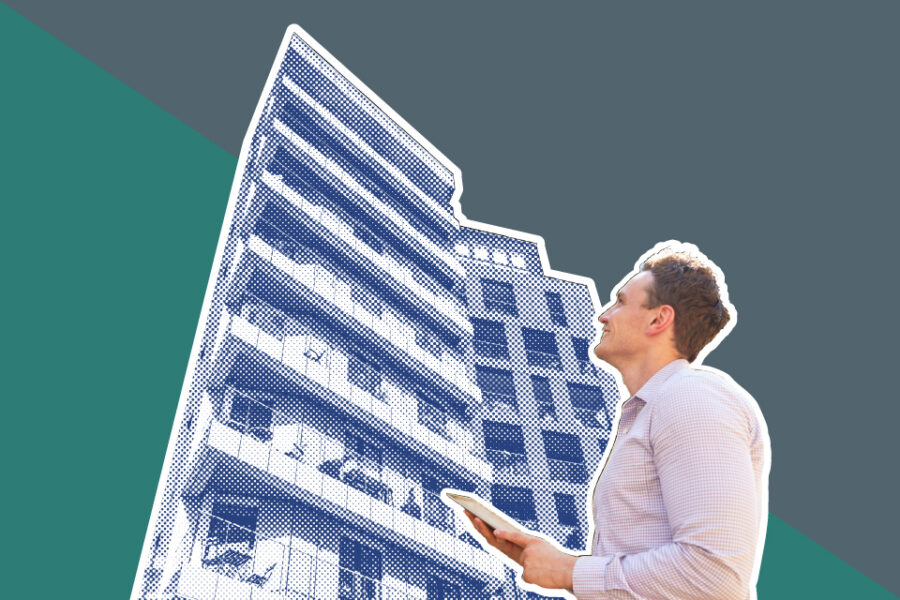The Building Safety Regulator is now the Building Control Authority for higher-risk buildings in England
On 1 October, the Building Safety Regulator (BSR) became the Building Control Authority for all higher-risk buildings (HRBs) in England.
This means that developers will no longer be able to choose the building control body they use for building new residential buildings that are over 18-metres or 7 storeys with at least 2 residential units, and hospitals and care homes that meet the same height threshold.

As BSR is now Building Control Authority for higher-risk buildings in England developers must apply to BSR for building control approval before starting building work on any projects involving HRBs.
Neil Hope-Collins, Operational Policy lead for Gateways and Building Control, discusses the changes to the building safety regime and BSR’s role in more detail…
The Building Safety Act, 2022 (BSA) places new legal responsibilities on those who are involved in the design and construction and occupation of HRBs. This means that everyone undertaking building work will need to be able to demonstrate compliance with the law. And provide hard evidence of this if challenged.
This will ensure more stringent project oversight, with clear accountability for the safety of HRBs throughout their whole life-cycle. In addition to the BSA, The Building (Higher-Risk Buildings Procedures) (England) Regulations 2023 (legislation.gov.uk) came into force on 17 August 2023. They set out the building control processes that apply to all HRB projects.
New regulations
The new regulations deliver the recommendations made by Dame Judith Hackitt in her report Building A Safer Future. They cover the technical detail which underpins the new, more stringent regime for the design and construction of HRBs. As well as, the details of the new in-occupation safety regime for these buildings.
From 1 October, BSR will carry out its function as the Building Control Authority through teams that include a registered building inspector and any other specialists required to assess a building control application submission. These will be called multi-disciplinary teams, or MDTs. BSR will lead these teams to ensure effective regulatory decisions, guide the structure of an inspection schedule and input to any requirements (conditions) that may be applied to an approval.
This is not new in terms of assessment of plans and site inspections. But it is a new method of delivery.
To strengthen regulatory oversight, building work on these higher-risk buildings will have to pass through a rigorous process consisting of three gateway points. BSR approval must be obtained:
- before starting building work
- before significant changes are made during construction
- when building work is completed
It will be an offence to start building work without BSR’s approval. And the regulator has enforcement powers to take action where breaches occur.
Planning Gateway 1
Fire safety is considered as part of the planning permission process. Since August 2021, the local planning authority has been required to consult the Health and Safety Executive on planning applications for HRBs.
Gateway 2
Building work on new HRBs can only start after the developer has building control approval from BSR. There is a 12-week determination period, from receipt of an application. Any change to this will be agreed between the BSR and the client. Key documentation required, which is new to the regime, includes:
- a competence declaration
- construction control plan
- change control plan
- mandatory occurrence reporting plan
- building regulations compliance statement
- a fire and emergency file
- a partial completion strategy (where relevant)
Once approved, BSR will carry out inspections during construction, and will agree a bespoke inspection schedule with the applicant. This could involve site inspections, requesting information such change control log(s), or other evidence of building regulations compliance.
BSR will be able to undertake tests or take samples of building materials by cutting into or laying open building work. And will be able to stop work if necessary.
Gateway 3
HRBs can only be occupied after BSR has checked that the building work is compliant and has issued the building with a completion certificate. Then the building must be registered with the BSR. A building cannot be occupied without these two things.
- There is an eight-week determination period from receipt of the completion certificate application.
- Gateway three will take place at the end of the building work. At this stage, BSR must be satisfied that as far as it can determine, the as-built building complies with building regulations requirements.
- New HRBs can only be registered with BSR after Gateway three has been passed – either for partial or full completion.
After an HRB has received its building control certificate it can be registered with BSR. The building’s Principal Accountable Person must complete the Registration. You can find out more on the roles and responsibilities of accountable persons (APs) and principal accountable persons (PAPs) for occupied HRBs here: Safety in high-rise residential buildings: Accountable persons
BSR will ‘call in’ registered buildings at regular intervals to make sure PAPs and APs are regularly assessing and continuously managing fire and structural safety risks for their HRBs.
You can read more in our leaflet ‘The three gateways to building safety’ and Building Safety Regulator as the Building Control Authority page.

Updates from the Building Safety Regulator
Keep up to date with the new regulator with our e-bulletin.